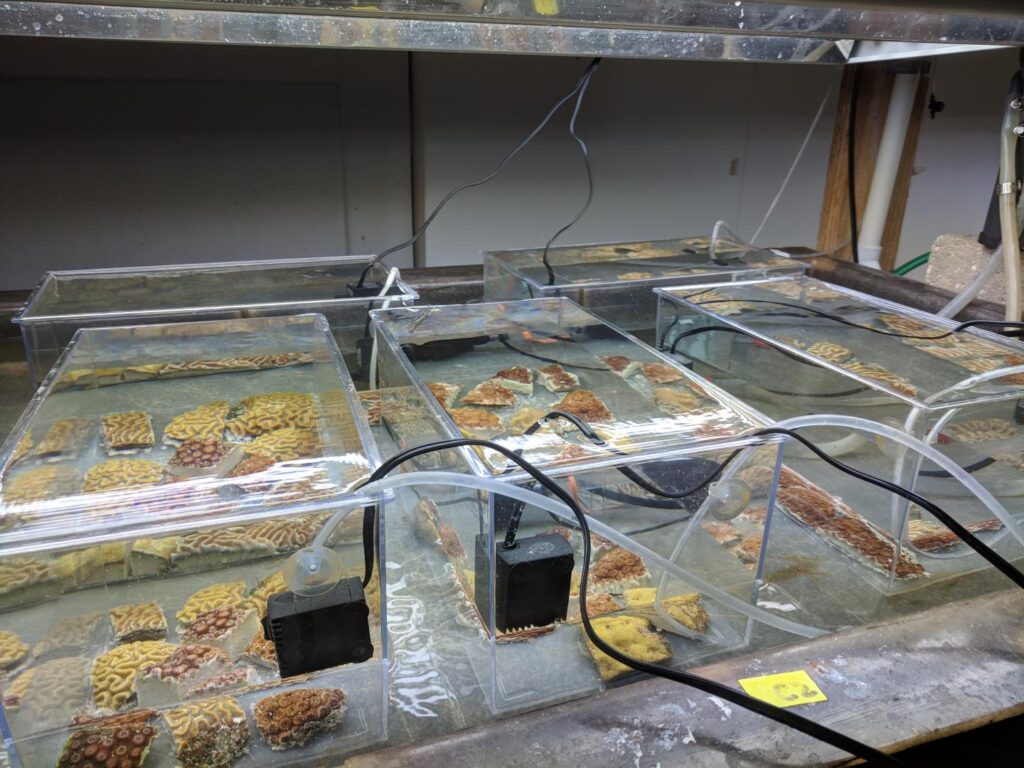We’ve often pondered, would pumping cold water up from the deep help corals during a bleaching event? It seems we’re not the only one to ask this question, as a new study published this week tests the hypothesis.
A study led by Yvonne Sawall, assistant scientist at the Bermuda Institute of Ocean Sciences (BIOS), is showing potential for the use of artificial upwelling or the application of cooler, deep water as a way to mitigate the thermal stress on corals.
Artificial upwelling is a geoengineering method that uses pumps to bring deep-ocean water to the surface. Originally designed to fertilize surface waters to increase fish stocks or carbon dioxide (CO2) sequestration, artificial upwelling may also be used to cool surface waters during heat waves.

Sawall and her co-authors studied three shallow water reef building coral species in Bermuda: Montastrea cavernosa (great star coral), Porites astreoides (mustard hill coral), and Pseododiploria strigosa (symmetrical brain coral).
After collecting fragments at a depth of 15 feet (5 meters), the research team placed the colonies in aquariums to test the effects of deep cold-water pulses simulating artificial upwelling during thermal stress. Fragments were treated with various temperatures conditions, including an average summer temperature (28°C); a heat stress treatment known to cause bleaching (31°C); a heat stress treatment with daily pulses of cooler deep water from a depth of 164 feet (50 m, 24°C); and a heat stress treatment with daily pulses of cooler deep water from a depth of 300 feet (100 m, 20°C).
The results of the study showed that even short intrusions of cooler deep water (less than two hours per day) can mitigate thermal stress in corals. This was evident in higher levels of zooxanthellae performance in corals exposed to heat stress and artificial upwelling compared to corals that were exposed to heat stress only, and this effect seemed stronger in the simulations with water from deeper depths.
“Our study shows the potential benefits of pulsed artificial upwelling during heat waves. The next steps now are to find suitable artificial upwelling settings to maximize the benefits, while minimizing potential harmful side effects of artificial upwelling for corals and the ecosystem they support,” Sawall said.



